Parsley is a highly valued culinary herb, whose leaves are used to flavour dishes. It mainly exists in two forms: curly parsley and flat-leaf parsley. It is a biennial plant, often grown as an annual, with dense foliage that renews itself for several months after sowing.
Sowing parsley has several advantages over buying young plants. It is an economical solution that allows you to obtain a large quantity of plants at a low cost. Additionally, sowing gives you the freedom to choose specific varieties suited to your culinary needs or growing environment. Finally, it is a relatively easy plant to cultivate as long as you respect its few requirements. Discover all the steps and tips to successfully sow your parsley.
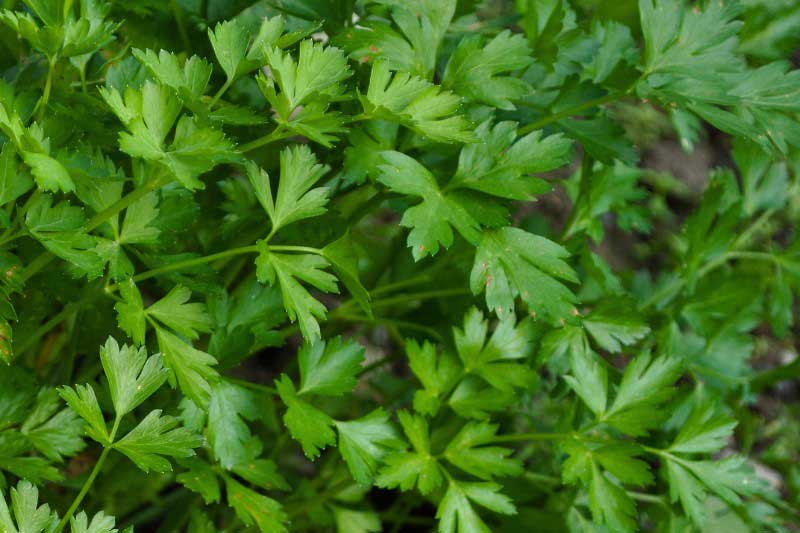
When to sow parsley?
The sowing period for parsley mainly depends on temperature and light conditions. Outdoors, parsley can be sown from March to August, depending on the local climate. Early sowings are generally done under cover or in pots, while direct sowing in the ground is preferred from April to May, when soil temperatures are more stable.
Since parsley is a slow-germinating plant, it is useful to anticipate sowings to obtain harvests as early as spring. It is also possible to stagger sowings every month or every two months until summer to ensure a continuous harvest. Indoors or in a greenhouse, sowings can start as early as February, provided a minimum temperature of around 15 °C is maintained.
How to sow parsley under cover?
Necessary materials
- Parsley seeds.
- Seedling pots, trays or containers.
- A good substrate such as a light seed compost or a mix of compost and sand.
- A mini-greenhouse or a clear plastic film to promote germination by maintaining warmth and humidity.
- A watering can with a fine rose or a spray bottle to water without disturbing the seeds.
- Labels to note the date and variety sown.
- A sieve to refine the surface of the compost if necessary.
Practical steps to sow parsley under cover
- Soak the seeds in warm water for 24 to 48 hours to activate germination (recommended, as parsley takes a long time to germinate).
- Fill the containers (pots or trays) with slightly moistened substrate, then level it at the surface.
- Sow the seeds to a maximum depth of 1 cm, spacing them slightly to avoid overcrowding.
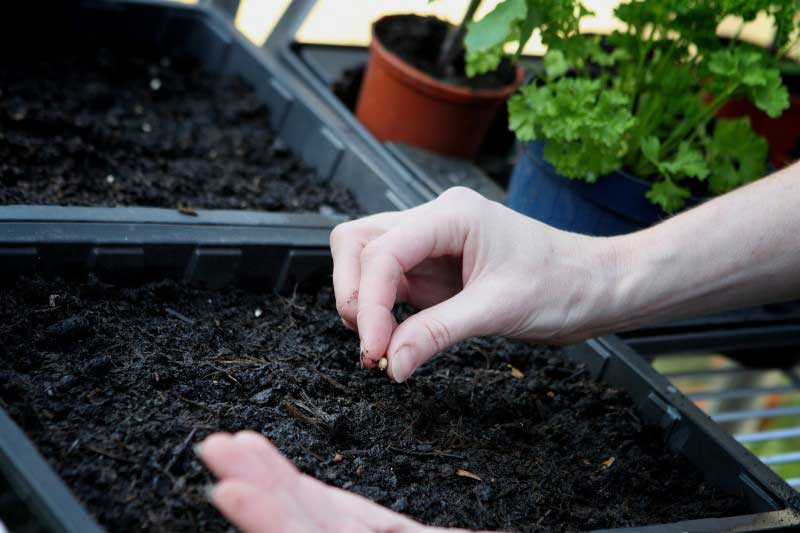
- Cover the seeds with a thin layer of sieved substrate, then lightly press down with a board.
- Water gently using a spray bottle or a watering can with a fine rose, without over-saturating.
- Place the containers at a temperature of 15 to 20 °C, in a bright location without direct sunlight.
- Monitor the germination of the seeds, which can take between 15 and 28 days depending on conditions.
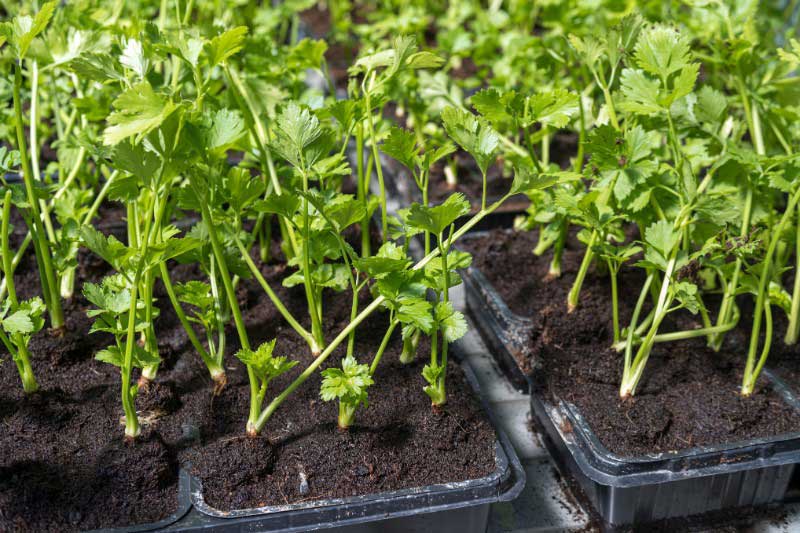
- Thin the seedlings when they have 3 to 4 leaves, keeping only the strongest ones.
- Transplant the young plants into larger pots, in a planter or in the ground, maintaining a spacing of about 25 to 30 cm between each plant. Be careful not to break the root during transplanting.
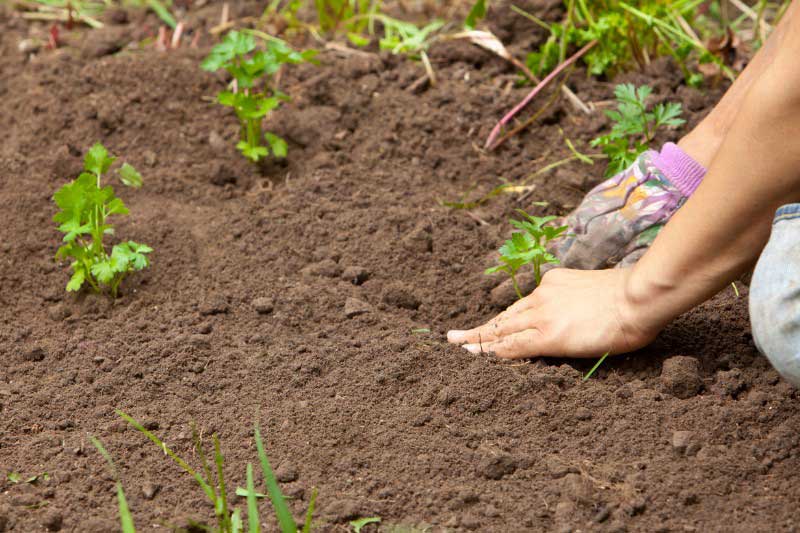
How to sow parsley in the ground?
Sowing parsley directly in the ground is a simpler and quicker method for growing this herb without the need for under-cover growing equipment. It is particularly suitable for gardeners with space in their vegetable garden or along borders. This method offers deep rooting, which is beneficial for the plant's development, and limits handling such as transplanting.
Where to sow parsley?
Parsley enjoys bright exposures, but without scorching direct sunlight. It grows well in partial shade or dappled sunlight, making it a versatile plant suitable for both gardens and balconies. In the ground, choose a soil rich in humus, light, and well-drained. Parsley dislikes excess water and overly compacted soils that hinder the growth of its taproot.
Necessary materials
- A spade or fork: to loosen the soil deeply.
- A rake or claw: to crumble and level the soil before sowing.
- A string line (optional): to mark straight and even furrows.
- A seed drill (optional), to evenly distribute the seeds.
- A watering can with a fine rose: to water gently without disturbing the seeds.
- Garden labels: to note the date and variety sown.
Practical steps to sow parsley in the ground
- Prepare the soil by working it to a depth of at least 20 cm using a spade or fork. Remove stones, roots, and clumps, then incorporate well-decomposed compost if the soil is poor.
- Level and refine the surface with a rake to obtain a uniform seedbed. The soil should be loose, cool, and well-drained.
- Mark shallow furrows (about 1 cm deep) spaced 25 to 30 cm apart. Use a string line to keep them straight.
- Soak the seeds in warm water for 24 to 48 hours beforehand to speed up germination, which is naturally slow in parsley.
- Sow sparsely in the furrows, spacing the seeds slightly. Too high a density will complicate thinning later on.
- Cover the seeds with a thin layer of sieved soil, then lightly press down to ensure contact with the soil.
- Water gently using a watering can with a fine rose to avoid disturbing the seeds. Keep the soil moist throughout the germination period.
- Optionally protect the sowing line with a cover or tunnel, especially at the beginning of the season or during unstable weather.
- Monitor the germination, which can take between 15 and 28 days depending on conditions. Weed manually as soon as seedlings appear.
- Thin the young plants when they have 3 to 4 leaves, leaving one plant every 25 to 30 cm. This step is important to avoid competition between plants.

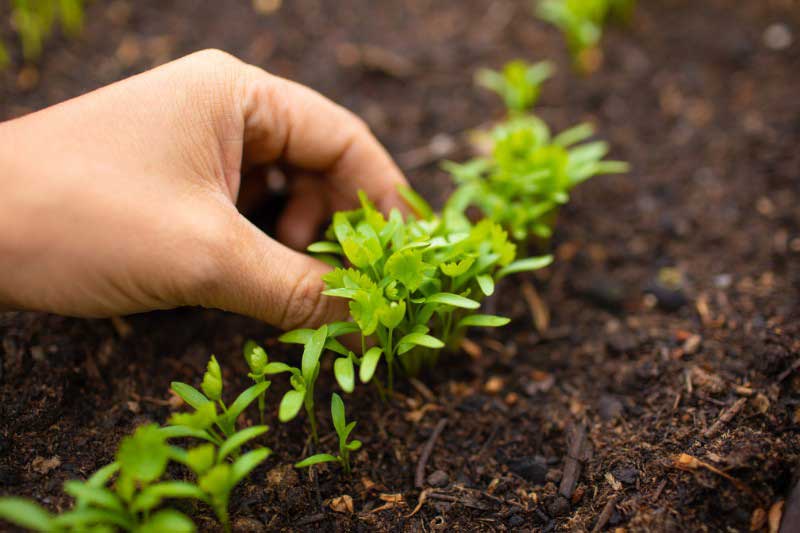
Sowing in the ground requires a bit of patience, but it is a reliable method to obtain beautiful, vigorous parsley plants that are perfectly suited to their environment.
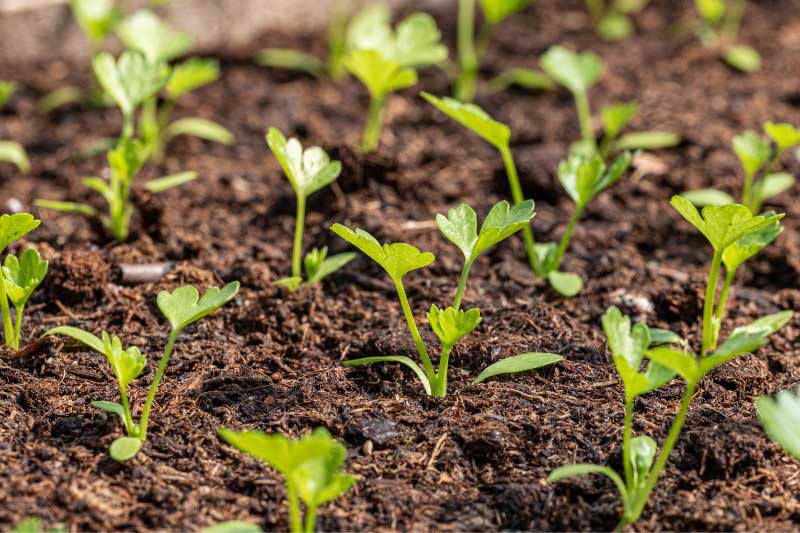
After sowing: care and maintenance of young plants
Once germination has occurred, young parsley plants require regular attention. Watering should be moderate but consistent: the substrate should remain moist without being waterlogged. A bright exposure, without excessive direct sunlight, is preferable to promote balanced growth. In pots, it is advisable to regularly turn the container so that the plants do not become leggy towards the light.
In the ground, consider mulching around the plants to retain moisture and limit the growth of adventive plants. Regular hoeing also helps aerate the soil. To prevent diseases such as damping-off, avoid excess water and ensure good air circulation around the young plants.
Finally, you can start harvesting parsley leaves about 3 months after sowing. Always pick the outer stems, leaving the centre intact to encourage continuous regrowth.
































Comments